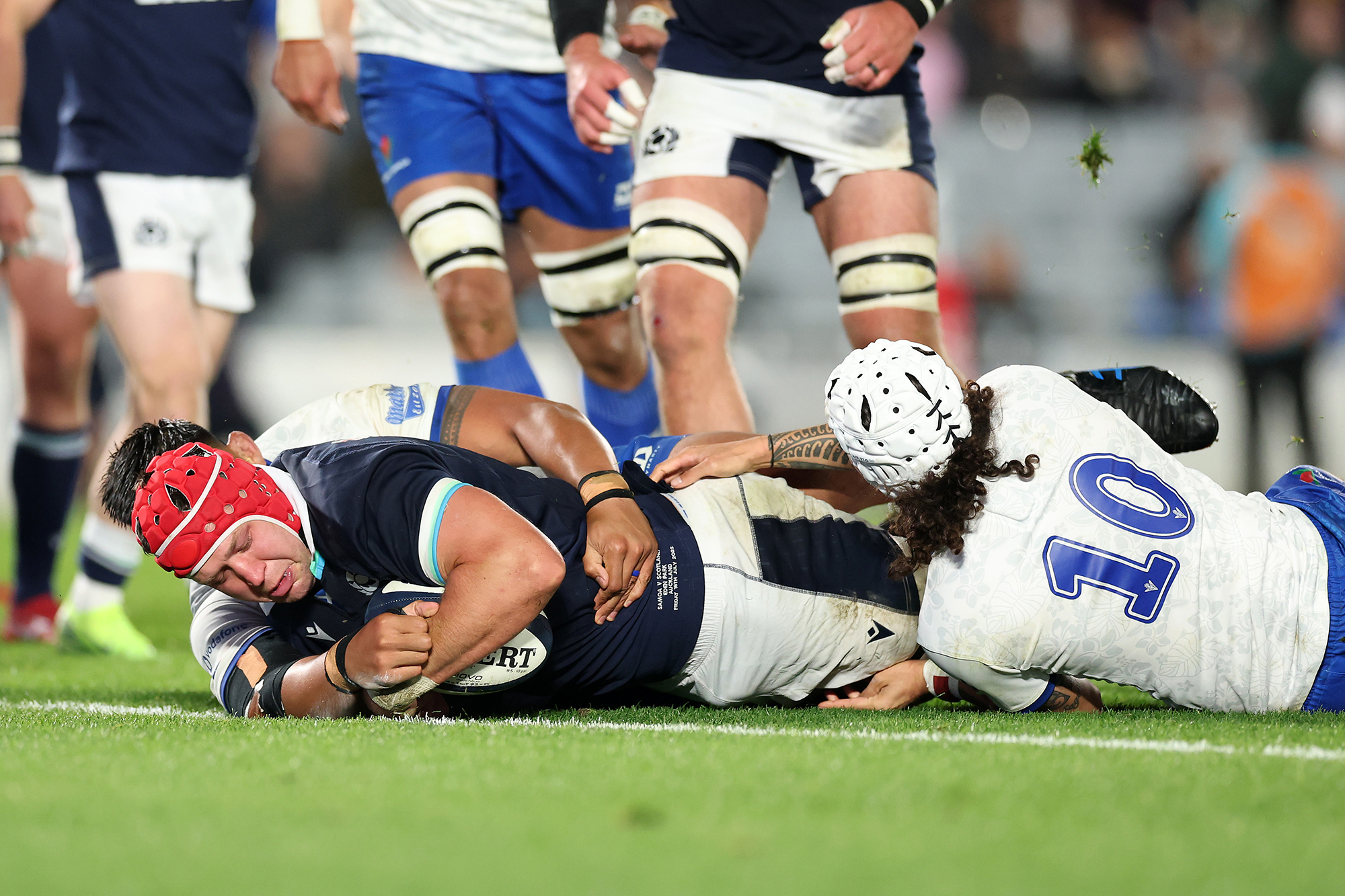During a training session Grant Gilchrist, the Edinburgh and Scotland international, suffered a potential concussion. Rugby union has worked hard in the past decade to install rigorous processes around the management of head injuries and after this incident Gilchrist tried a new piece of technology. Sitting down, the 6ft 7in second row was fitted with PolarCap, a head-and-neck cooling system which is being trialled across the United Rugby Championship over the next two years.
“It is an unusual feeling, like something you have never really felt before,” Gilchrist tells The Observer. “We get used to using cooling equipment on ankles and knees and it’s not too dissimilar. I didn’t find it uncomfortable, it was different more than anything.”
During exercise an athlete’s brain temperature is in a hyperthermic (elevated) state, at about 39-40 degrees instead the average 38 or lower. The additional metabolic strain if a concussion occurs during a higher temperature may worsen the acute and longer term effects of the injury.
The COOLHEAD study hopes to discover whether lowering the brain’s temperature quickly after a concussion can improve recovery. In the study, players within half an hour of suffering a suspected or a diagnosed concussion will wear the PolarCap for at least 45 minutes, with the liquid coolant pumped through the headwear via four flexible pipes from a small portable box to help accelerate the natural cool-down period after exercise and, in theory, lower the demand on the brain by reducing brain temperature.
The study, funded by PolarCap’s parent company, does have a precedent in ice hockey, but not rugby. Out of 123 concussions in the Swedish Hockey League, 61 were treated using the PolarCap. That study, which ran for five seasons, found that the players who used PolarCap had faster return-to-play times. After five weeks all of those who used the device were back playing, while 23% of the untreated players were still sidelined with concussion symptoms. The study concluded players using PolarCap were less likely to have medium- to long-term consequences.
Potentially faster returns for players are not the purpose for the COOLHEAD study, being carried out by scientists at Leeds Beckett University, which is trying to determine if cooling after concussion can provide a measurable benefit.
About 200 concussions will be monitored, half from the URC, where teams will use the PolarCap (the intervention group), and the other half from Prem Rugby, where teams will not (the standard-care group), playing a vital role in the study by providing a set of comparable statistics. Players for both leagues will still follow the strict “return-to-play” protocols and minimum timeframes in place, as per World Rugby’s guidelines.
“For me the most interesting finding from the ice hockey study was the reduction seen in those players that were ruled out of playing for months with their concussion after using PolarCap, in comparison to concussed players that did not use it,” said Dr Michael Dunlop, the medical adviser for the URC. “But it is not good science to take one study’s findings as proven fact and apply it to all sports.
“The current study is an example of international collaborative work between the URC, the Prem, World Rugby, Leeds Beckett and PolarCap. The aim is to independently assess if acute cooling after a concussive injury, delivered in a controlled manner, pitch-side by PolarCap, has a benefit in addition to the return-to-play protocols currently in place.”
PolarCap is not the first trial when it comes to concussion research to have been used in the URC, which has previously run studies on the effectiveness of saliva testing and a number of instrumented mouthguards. With the latter, sensors in the mouthguards send messages to medical staff when a player experiences a high-magnitude head incident which could cause a concussion, leading to an off-field assessment. Publication of the COOLHEAD study protocol in the BMJ Open Sport & Exercise Medicine, suggests there is serious potential for the new technology if the it proves to be a success.
Bristol signed a two-year extension with the company behind PolarCap back in July, while Stade Français in France’s Top 14 and the Australia and Georgia national teams have also used it in recent years. Outside rugby union there are talks with multiple teams in Australian rugby league – the Manly Sea Eagles have used PolarCap over the past two seasons – while more than 50 teams in European ice hockey have also signed up. There are ongoing studies in American football and boxing.
Cooling head caps, saliva tests, smart mouthguards, the HIA process, new tackle laws: the effort that has gone into addressing concussion in the past 10 years has been significant and understandably so, given 25% of former elite players are at risk of cognitive problems later in life, as revealed by World Rugby’s brain health service earlier this year.
Dr Dunlop added: “While prevention and prompt recognition of head injuries should remain the priority, PolarCap, through the principles of local cooling, may now be able to help with what happens afterwards.”
As for Gilchrist, speaking as a senior Scotland player, any attempts to improve the recovery process from concussions have his support.
“It is exactly what we need to do. I speak with players a lot and we want the game to be safer. The treatment [for concussion] at the minute essentially is rest. As a player, you always want to feel like you are doing something to get better and sometimes that is the frustration around having concussions. Often players feel a bit helpless having to do nothing, to rest. Things like [PolarCap] from a players’ point of view, being open-minded and engaging with innovations is the key to finding what does really work.”
Photograph by Phil Walter/Getty Images
